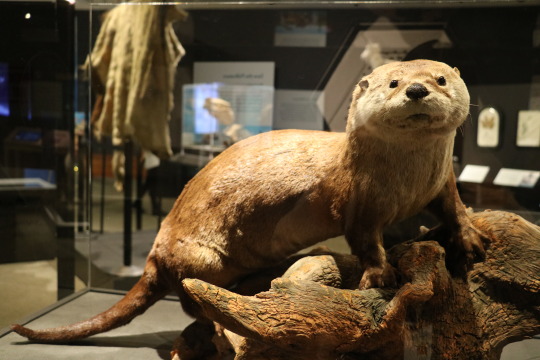
Usually, we hear about how human activity negatively impacts wildlife populations, but the inverse can also be true when conservationists make a concerted effort.
One local example is river otters in the state of Pennsylvania, which were in decline in the 20th century because of habitat destruction and river pollution. Conservationists recognized the problem and spent decades restoring their habitat and eventually reintroduced river otters in 1982. Their population have since thrived, and the project is heralded as one of the greatest success stories of modern conservancy.
Learn more about population rehabilitation in We Are Nature: Living in the Anthropocene, a new exhibition at Carnegie Museum of Natural History that explores the interconnectedness of humanity and nature in the Anthropocene.
The Anthropocene is the current geological era in which humans are making a profound impact on the geological strata. While the term itself is still being debated by geologists, the museum is embracing it as a social and cultural tool for exploring the broad sum effect humans are having on the planet in the exhibition We Are Nature: Living in the Anthropocene—open now through summer 2018.
